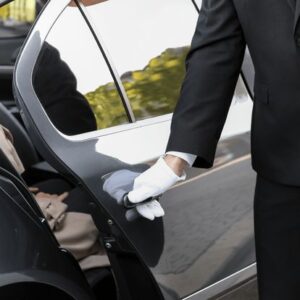When it comes to automotive electrical systems, even the smallest components can have an outsized impact on vehicle performance, reliability, and safety. The Hyundai & Kia 00–15 4-Pin Multi-Use Black Relay – Deco 95230-2P020 (12V 20A) is one such part: small, inexpensive, and often overlooked — yet critical to the proper functioning of many vehicle systems.
In this detailed guide, we’ll explore what this relay does, why it’s important, how to test and replace it, which vehicles it fits, and why using a genuine OEM part matters.
What Is the Deco 95230-2P020 Relay?
The Deco 95230-2P020 is a 4-pin electromechanical relay used widely across Hyundai and Kia models manufactured between 2000 and 2015. The “4-pin” designation means the relay has four terminals: two for the control (coil) circuit and two for the load (switching) circuit.
Key Specifications:
- Voltage: 12V DC
- Current Rating: 20A
- Type: Multi-use / General-purpose, black housing
- OEM Status: Genuine Hyundai / Kia component
- Applications: Suitable for multiple systems — such as headlights, fans, air conditioning, and accessories
Because it’s a multi-use relay, this component can serve in several positions within the fuse or relay box, depending on the vehicle’s wiring design. It is identical to the relays used in many power, lighting, or accessory circuits.
Function and Purpose
A relay is an electrically operated switch that allows a low-power circuit to control a high-power load safely. In a 4-pin relay like the Deco 95230-2P020:
- The control circuit (coil) activates when voltage is applied, creating a magnetic field.
- The load circuit (contacts) closes or opens depending on the relay type, allowing current to flow to the connected device — such as a fan motor or headlamp.
This design allows sensitive control modules or switches to operate high-current devices without being exposed to the heavy electrical load. In modern vehicles, this ensures both safety and reliability.
Common uses of this relay include:
- Power distribution
- Fuel pump operation
- Cooling fan control
- Air conditioning compressor
- Lighting circuits
- Accessory and ignition power
Vehicle Compatibility
The 95230-2P020 relay is compatible with many Hyundai and Kia vehicles from approximately 2000 to 2015. Common models include:
Hyundai:
- Accent
- Elantra
- Sonata
- Santa Fe
- Tucson
- Azera
- Veracruz
Kia:
- Optima
- Sorento
- Sportage
- Forte
- Rio
- Sedona
- Soul
Because it’s a multi-use relay, it may appear in different slots for each model, serving various functions. Always check your vehicle’s owner’s manual or the relay box diagram for exact placement.
Common Symptoms of a Failing Relay
Relays are mechanical components that wear out over time due to heat, vibration, and electrical arcing. When they begin to fail, they can cause intermittent or complete loss of power to specific circuits. Common symptoms include:
- Intermittent operation: Devices such as the cooling fan or lights may work sporadically.
- Complete failure: The component powered by the relay stops functioning entirely.
- No clicking sound: A healthy relay usually makes a soft click when energized; silence can indicate failure.
- Burnt smell or melted housing: Indicates overheating or electrical overload.
- Electrical faults or warning lights: Modern vehicles may log diagnostic trouble codes when a circuit doesn’t respond correctly.
A failing relay can mimic many other electrical issues, so testing before replacement is always a good idea.
How to Test the Relay
Testing a 4-pin relay like the Deco 95230-2P020 is simple with a few tools:
You’ll need:
- A 12-volt power source or car battery
- Jumper wires
- A digital multimeter
Steps:
- Identify the pins. Refer to the diagram printed on the relay or your vehicle’s manual. Two pins are for the coil (control side), and two are for the load (switching side).
- Check for continuity. With no power applied, there should be no continuity between the load terminals.
- Energize the coil. Apply 12V across the coil pins. You should hear a distinct “click.”
- Test the contacts. When the coil is energized, check for continuity between the load terminals — it should now be closed.
- Measure resistance. If the coil shows infinite resistance (open circuit) or near-zero (short), the relay is bad.
If the relay fails any of these tests, it should be replaced.
Replacing the Relay
Swapping out a faulty relay is straightforward and requires minimal tools.
Replacement Steps:
- Turn off the ignition and disconnect the negative battery terminal.
- Locate the relay box — usually under the hood or dashboard.
- Use the diagram on the fuse box cover to identify the relay position.
- Carefully pull out the old relay. Avoid bending the pins or damaging the socket.
- Inspect the socket for corrosion or burnt contacts.
- Insert the new Deco 95230-2P020 relay securely into the same slot.
- Reconnect the battery and test the corresponding system.
Because the 95230-2P020 is an OEM-fit component, installation is plug-and-play with no wiring modifications required.
Why Use a Genuine OEM Relay
While aftermarket relays are widely available, using a genuine Hyundai/Kia relay offers several important advantages:
- Precise specifications: Matches the vehicle’s original design exactly.
- Reliability: Made with high-quality materials and built to withstand heat and vibration.
- Safety: OEM relays meet factory current and voltage tolerances, reducing the risk of short circuits or overheating.
- Perfect fit: Direct replacement without compatibility issues.
- Warranty and quality assurance: Genuine parts are tested and backed by manufacturer standards.
A non-OEM relay may appear similar but can fail prematurely or cause inconsistent performance, especially in critical systems like the cooling fan or fuel pump.
Preventive Maintenance and Care
While relays typically last many years, you can extend their lifespan and prevent electrical problems with a few simple habits:
- Keep the fuse and relay box clean and sealed from moisture.
- Periodically inspect relays and connectors for corrosion or heat marks.
- Avoid using high-draw accessories on circuits not designed for them.
- If one relay fails, check others of the same type for signs of wear.
- Ensure your vehicle’s charging system maintains proper voltage levels.
A small amount of dielectric grease on relay terminals (if recommended) can help prevent oxidation and ensure solid electrical contact.
Real-World Applications
In daily use, the Deco 95230-2P020 relay plays a vital role in several key systems. It may power the cooling fans that regulate engine temperature, control the AC compressor, or manage accessory circuits that deliver power to your dashboard and infotainment system.
Because it handles moderate electrical loads, this 12V 20A relay ensures that components receive the correct voltage and current while protecting sensitive control modules from damage.
Its versatility also means that if one circuit fails, you can often swap the relay temporarily with another identical one in the box to test functionality — a useful troubleshooting trick for mechanics and DIY owners alike.
Conclusion
The Hyundai & Kia 00–15 4-Pin Multi-Use Black Relay – Deco 95230-2P020 (12V 20A) may be a small part, but it’s an essential link in your vehicle’s electrical chain. Acting as the bridge between low-power control circuits and high-power components, this relay ensures safe, efficient operation of everything from cooling fans to headlights.
When electrical problems arise, this little device is often the silent culprit. Fortunately, replacing it is simple, affordable, and instantly restores reliability to critical systems. Always choose a genuine OEM Deco relay for long-term durability and peace of mind.



